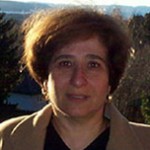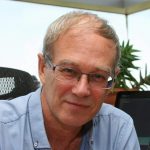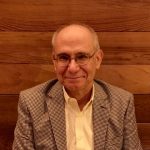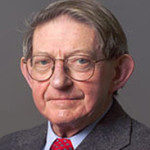1 Elaine Cohen, 2009 Bézier Award Recipient
Elaine Cohen research work was inspired in part by a 1970 visit that graduate students Cohen and Riesenfeld paid to Pierre Bézier in Paris to learn more about the ideas behind Bézier’s new methods for CAD/CAM. Cohen collaborated with Tom Lyche and Richard Riesenfeld to develop the Oslo Algorithms to enable simultaneous knot insertion at multiple locations in a B-spline representation. In the areas of representational algorithms, Cohen and Riesenfeld have contributed several seminal papers in CAGD, including important works in box splines, cone splines, and simplex splines. While somewhat more theoretical in nature, these papers, like all of their works, have been done with an eye toward applications. Throughout her career, she has always tied theoretical advances to practical gains in geometric modeling. Evidence to this effect is the spin-off company Engineering Geometry Systems (EGS) that Cohen and Riesenfeld founded, which in 1995 introduced the FeatureCAM line of products. The hallmark of this company has been the notion of providing very high level mechanical design features linking manufacturing with geometry in a straightforward, intuitive manner. Cohen and Riesenfeld have developed a strong academic program in CAGD that has been the training grounds for many students who have become contributors to the field. They have coauthored a significant reference and text for advanced study of B-spline methods in CAGD. Their sustained leadership and vision over decades of important research contributions and teaching has left their names inseparable from the field of freeform geometric modeling.
2 Tamal Dey, 2019 SMA Fellow
 A leader in the field of geometric computing, Tamal Dey has made several fundamental research contributions over the last twenty seven years in geometric modeling and surrounding areas. His research has advanced theoretical/practical understanding of several geometric/topological problems arising in application areas of science and engineering. Specifically, his work on surface reconstruction, mesh generation, and topological data analysis have found applications in geometric modeling, computer graphics, visualization, shape and data analysis. One of the hallmarks of Deys work is that he developed algorithms with theoretical guarantees that are useful in practice. An attestation to this claim is given by the fact that several software based on these algorithms have found wide use. The most widely used geometric library CGAL incorporates several of his results. The Cocone software developed by his group for surface reconstruction is widely used in academia and industry. His DelPSC software has been a basis for Synopsis to develop a new mesh generation software. He has written highly influential papers on a broad range of topics in geometric and topological computing, and has authored two books. The theoretical depth of his work is evidenced by his publications in top venues with 28 SoCG, 14 SODA, 3 ACM STOC, 2 IEEE FOCS, 2 JACM, 4 SICOMP papers, and the breadth by his 4 SIGGRAPH, 4 SGP, 5 IEEE Shape modeling, 3 Meshing Roundtable, 6 ACM-Solid Modeling, and 2 IEEE Visualization papers. Tamal was elected ACM Fellow in 2018.
A leader in the field of geometric computing, Tamal Dey has made several fundamental research contributions over the last twenty seven years in geometric modeling and surrounding areas. His research has advanced theoretical/practical understanding of several geometric/topological problems arising in application areas of science and engineering. Specifically, his work on surface reconstruction, mesh generation, and topological data analysis have found applications in geometric modeling, computer graphics, visualization, shape and data analysis. One of the hallmarks of Deys work is that he developed algorithms with theoretical guarantees that are useful in practice. An attestation to this claim is given by the fact that several software based on these algorithms have found wide use. The most widely used geometric library CGAL incorporates several of his results. The Cocone software developed by his group for surface reconstruction is widely used in academia and industry. His DelPSC software has been a basis for Synopsis to develop a new mesh generation software. He has written highly influential papers on a broad range of topics in geometric and topological computing, and has authored two books. The theoretical depth of his work is evidenced by his publications in top venues with 28 SoCG, 14 SODA, 3 ACM STOC, 2 IEEE FOCS, 2 JACM, 4 SICOMP papers, and the breadth by his 4 SIGGRAPH, 4 SGP, 5 IEEE Shape modeling, 3 Meshing Roundtable, 6 ACM-Solid Modeling, and 2 IEEE Visualization papers. Tamal was elected ACM Fellow in 2018.
3 Gershon Elber, 2019 Bézier Award Recipient
Gershon Elber is a professor in the Computer Science Department, Technion, Israel. His research interests span computer aided geometric designs and computer graphics. Prof. Elber received a BSc in computer engineering and an MSc in computer science from the Technion, Israel in 1986 and 1987, respectively, and a PhD in computer science from the University of Utah, USA, in 1992. He is a member of SIAM and the ACM. He was a Visiting Professor at the University of Washington and in Boeing, in 2006-2007, and at MIT in 2018, and founded GeomCore, a geometry related company, in his sabbatical in 2000. Prof. Elber has served on the editorial board of the Computer Aided Design, Computer Graphics Forum, The Visual Computer, Graphical Models, and the International Journal of Computational Geometry & Applications and has served in many conference program committees including Solid Modeling, Shape Modeling, Geometric Modeling and Processing, Pacific Graphics, Computer Graphics International, and Siggraph. Prof. Elber was one of the paper chairs of Solid Modeling 2003 and Solid Modeling 2004, one of the conference chairs of Solid and Physical Modeling 2010, the chair of GDM 2014, the conference co-chair of SIAM GD/SPM 2015, and the conference co-chair of SPM 2018. He has published over 200 papers in international conferences and journals, presented ten keynote invited talks, and is one of the authors of a book titled “Geometric Modeling with Splines – An Introduction”. Prof. Elber received the Ray and Miriam Klein – the Technion Research Award, in 1998, the Hershel Rich – Technion Innovation Award in 2002 for “Virtual Marionettes – Remote Collaboration Animation and Interaction” and in 2019 for “Volumetric Modeling Solutions”, the CodeArt award in 2003 (National Art in Computing Contest, third place), the John Gregory Memorial Award, 2011, in “Appreciation for Outstanding Contributions in Geometric Modeling”, and the Solid Modeling Association pioneers award in 2016. Prof. Elber was the Vice dean for computing and the Vice dean for teaching, CS department, Technion – Israel Institute of Technology, in 1997-1999 and 2002-2004, respectively, and was the Deputy vice president for computing, Technion – Israel Institute of Technology, in 2010-2013.
4 Stefanie Hahmann, 2019 SMA Fellow
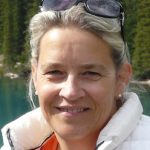 Stefanie Hahmann is a professor of computer science and applied mathematics at the University of Grenoble since 1995. She is a member of the research team Imagine, a joint team of LJK laboratory and INRIA. She graduated from Technical University Braunschweig and University Paris VI in mathematics in 1991. She obtained a PhD in Computer Science from Technical University Kaiserslautern (Germany) in 1994. Her research interests cover geometric modeling, design, and reconstruction. She contributed over the years to a number of high-level models for shapes and deformations such as G1 surface splines, volume preserving multiresolution deformation methods, and developable surfaces for animation. She has been recently focusing on expressive shape generation using sketch-based interfaces and immersive environments. Stefanie is very active in service to the community. She is associate editor of CAD and Computers & Graphics. Stefanie was conference chair and paper chair for many international conferences in the field of geometric modeling and computer aided geometric design. She also organized five Dagstuhl seminars on Geometric Modeling and was Program director and then Vice-chair of the SIAM activity group on Geometric Design (2009-2012). Stefanie was also very engaged in the Solid Modeling Association (SMA). She was not only paper chair for four SPM conferences in 2011, 2012, 2016 and 2017, but also served for five years as a member of the SMA Executive Committee from 2013 to 2017. She is conference co-chair of the present SPM 2019 conference.
Stefanie Hahmann is a professor of computer science and applied mathematics at the University of Grenoble since 1995. She is a member of the research team Imagine, a joint team of LJK laboratory and INRIA. She graduated from Technical University Braunschweig and University Paris VI in mathematics in 1991. She obtained a PhD in Computer Science from Technical University Kaiserslautern (Germany) in 1994. Her research interests cover geometric modeling, design, and reconstruction. She contributed over the years to a number of high-level models for shapes and deformations such as G1 surface splines, volume preserving multiresolution deformation methods, and developable surfaces for animation. She has been recently focusing on expressive shape generation using sketch-based interfaces and immersive environments. Stefanie is very active in service to the community. She is associate editor of CAD and Computers & Graphics. Stefanie was conference chair and paper chair for many international conferences in the field of geometric modeling and computer aided geometric design. She also organized five Dagstuhl seminars on Geometric Modeling and was Program director and then Vice-chair of the SIAM activity group on Geometric Design (2009-2012). Stefanie was also very engaged in the Solid Modeling Association (SMA). She was not only paper chair for four SPM conferences in 2011, 2012, 2016 and 2017, but also served for five years as a member of the SMA Executive Committee from 2013 to 2017. She is conference co-chair of the present SPM 2019 conference.
5 Shi-Min Hu, 2019 SMA Fellow
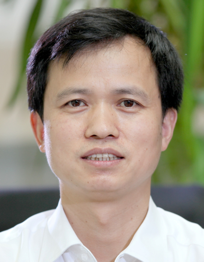 Shi-Min Hu was elected as SMA Fellow for his long-term contributions to curve and surface modeling, 3D point cloud reconstruction, and geometric computing for image and video processing. His early work on curves and surfaces included editing curves and surfaces with geometric constraints, extension of curves and surfaces with maximal continuity, approximate degree reduction and approximate merging algorithm for curves and surfaces. In last ten years, he has worked on 3D reconstruction from point clouds, including automatic semantic modeling, real-time high-accuracy 3D reconstruction, and reconstruction from noisy and incomplete depth maps using 3D convolutional networks. Shi-Min is famous for his “Sketch2X” works, including Sketch2photo and Sketch2Scene, which use interactive sketching for internet image montage and 3D scene modeling. He also made solid contributions to applications of geometric computing in image and video processing. He showed how to do 3-sweeps for 3D modeling from a single photo, taking image editing to the third dimension. He proposed the global contrast method for salient region detection, and it is now one of the two main computational principles for salience detection, with great importance and influence in the field of computer vision. Besides serving as SMA Executive Committee Chair, he has also been very active in conference organization and journal editorship, as well as supervising many successful PhD students and postdocs, all of which further ensure his lasting contributions to our field.
Shi-Min Hu was elected as SMA Fellow for his long-term contributions to curve and surface modeling, 3D point cloud reconstruction, and geometric computing for image and video processing. His early work on curves and surfaces included editing curves and surfaces with geometric constraints, extension of curves and surfaces with maximal continuity, approximate degree reduction and approximate merging algorithm for curves and surfaces. In last ten years, he has worked on 3D reconstruction from point clouds, including automatic semantic modeling, real-time high-accuracy 3D reconstruction, and reconstruction from noisy and incomplete depth maps using 3D convolutional networks. Shi-Min is famous for his “Sketch2X” works, including Sketch2photo and Sketch2Scene, which use interactive sketching for internet image montage and 3D scene modeling. He also made solid contributions to applications of geometric computing in image and video processing. He showed how to do 3-sweeps for 3D modeling from a single photo, taking image editing to the third dimension. He proposed the global contrast method for salient region detection, and it is now one of the two main computational principles for salience detection, with great importance and influence in the field of computer vision. Besides serving as SMA Executive Committee Chair, he has also been very active in conference organization and journal editorship, as well as supervising many successful PhD students and postdocs, all of which further ensure his lasting contributions to our field.
6 Nicholas M. Patrikalakis, 2016 Bézier Award Recipient
Professor Nicholas M. Patrikalakis has contributed to the advancement of the solid and geometric modeling fields over the last thirty years, devising new robust computational geometry solutions for the design, analysis and fabrication of complex structures bounded by sculptured surfaces. Dr. Patrikalakis’ work in solid, geometric and physical modeling has produced seminal research on the robust and efficient computation of all roots of a system of nonlinear polynomial equations in n variables, with manifold applications in surface-to-surface intersections for geometric modeling and CAD, global differential geometry, shape interrogation (medial axis transforms and their applications), and approximation of high-order and procedural parametric curves and surfaces for high accuracy data exchange, among many others. His recent work focuses on robotic path planning and shape reconstruction under uncertainty in complex environments.
7 Helmut Pottmann, 2018 Bézier Award Recipient
Helmut Pottmann made fundamental contributions at the intersection between mathematics and geometric modeling. An original aspect of his research is his deep analysis of the interplay between geometric considerations and numerical optimization, that take a specific form in the context of discretized objects. Prominent examples of his contributions include theoretical understanding of 3D registration using distance field and robust feature detection using integral invariants (twice voted for top cited paper in CAGD). He also contributed data modeling using kinematic structures, as well as several contributions in more classical computer aided geometric design. In 2006 he started exploring applications of his original approach to architectural design, and published “Geometric modeling with conical meshes and developable surfaces” in ACM SIGGRAPH. He subsequently explored the underlying elegant mathematical structures, which are published e.g. in ‘A curvature theory for discrete surfaces based on mesh parallellity’, Math. Annalen 2010. His original viewpoint on architectural design has now become a new research area, called “architectural geometry”, with its own conference AAG (Advances in Architectural Geometry). He launched the AAG conference in 2008. Within less than a decade, AAG has become a highly successful conference: on 2012, AAG Paris had ~450, and AAG Zurich and AAG London had ~350 participants.
8 Ari A. G. Requicha, 2007 Bézier Award Recipient
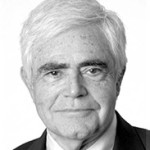
Aristides Requicha led the Production Automation Project (PAP) at the University of Rochester from the early 1970s to the mid 1980s, together with Herbert Voelcker. The PAP was the premier academic group working in what became known as solid modeling. They established most of the theoretical foundations for the field, by using point-set and algebraic topology. These algorithms were embodied in the PADL-1 and PADL-2 systems developed at PAP in the early 1970s, which was the first to demonstrate correct handling of Boolean operations for objects with overlapping boundaries. Set membership classification emerged as an important concept, which generalized such operations as point inclusion and clipping. Requicha become a Professor of Computer Science at USC in the 80’s and led the Programmable Automation Laboratory (PAL) at USC until recently. PAL focused on applications of solid modeling to automation of manufacturing and inspection operations, and also worked on the difficult problem of robust geometrical computation. The Lab attacked the problems of recognition of (possibly interacting) machinable features, automatic fixturing, and CMM (Coordinate Measuring Machine) inspection. Recently, he has been working on the construction of arbitrary shapes by robotic self-assembly. One of his major and lasting contributions to solid modeling is the training a cadre of graduate students, several of whom have become leaders in the solid modeling field.
9 Richard Riesenfeld, 2009 Bézier Award Recipient
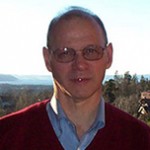 Richard Riesenfeld’s PhD dissertation in 1973 introduced B-splines as a powerful representation and design technique for geometric modeling and CAD/CAM. In 1974, shortly after arriving at Utah and with Cohen’s support, Riesenfeld and Barnhill organized at the University of Utah the first International Conference on Computer Aided Geometric Design (CAGD) to bring together for the first time many international pioneers in disparate activities, many of whom had never met but all of whom were pursuing an early vision of CAD/CAM. Pierre Bézier and Steve Coons were featured speakers. In 1979 he published with Jeffrey Lane the Lane-Riesenfeld Algorithm for subdivision of Bézier surfaces and refinement of uniform B-spline surfaces. Riesenfeld and Cohen collaborated with Lyche to develop the Oslo Algorithms to enable simultaneous knot insertion at multiple locations in a B-spline representation. In most contemporary CAD/CAM systems the greater representational power of nonuniform B-splines, as originally proposed in Riesenfeld’s dissertation, has supplanted uniform B-splines that were favored for simplicity in early CAD/CAM systems. In the areas of representational algorithms, Cohen and Riesenfeld have contributed several seminal papers in CAGD, including important works in box splines, cone splines, and simplex splines. In 1980, Cohen and Riesenfeld began the Alpha_1 geometric modeling test-bed. They founded the spin-off company Engineering Geometry Systems (EGS) which in 1995 introduced the FeatureCAM line of products. EGS’s international success led to its being acquired in 2005, by Delcam, the world’s leading CAM vendor. Subsequently, in 2014, Delcam was, in turn, acquired by Autodesk.
Richard Riesenfeld’s PhD dissertation in 1973 introduced B-splines as a powerful representation and design technique for geometric modeling and CAD/CAM. In 1974, shortly after arriving at Utah and with Cohen’s support, Riesenfeld and Barnhill organized at the University of Utah the first International Conference on Computer Aided Geometric Design (CAGD) to bring together for the first time many international pioneers in disparate activities, many of whom had never met but all of whom were pursuing an early vision of CAD/CAM. Pierre Bézier and Steve Coons were featured speakers. In 1979 he published with Jeffrey Lane the Lane-Riesenfeld Algorithm for subdivision of Bézier surfaces and refinement of uniform B-spline surfaces. Riesenfeld and Cohen collaborated with Lyche to develop the Oslo Algorithms to enable simultaneous knot insertion at multiple locations in a B-spline representation. In most contemporary CAD/CAM systems the greater representational power of nonuniform B-splines, as originally proposed in Riesenfeld’s dissertation, has supplanted uniform B-splines that were favored for simplicity in early CAD/CAM systems. In the areas of representational algorithms, Cohen and Riesenfeld have contributed several seminal papers in CAGD, including important works in box splines, cone splines, and simplex splines. In 1980, Cohen and Riesenfeld began the Alpha_1 geometric modeling test-bed. They founded the spin-off company Engineering Geometry Systems (EGS) which in 1995 introduced the FeatureCAM line of products. EGS’s international success led to its being acquired in 2005, by Delcam, the world’s leading CAM vendor. Subsequently, in 2014, Delcam was, in turn, acquired by Autodesk.
10 Jarek Rossignac, 2014 Bézier Award Recipient
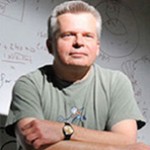 Jarek Rossignac worked with Ari Requicha to define constant-radius blending, constraints, and offsetting operations in CSG. This work is still being cited 30 years later. He has subsequently extended this work to variable radius blending, providing a set theoretic formulation and simple control. His work on selective geometric complexes and on constructive non-regularized geometry helped to form the basis for non-manifold boundary representations, also inspiring advances in commercial products. His pioneering work in 1993 on mesh simplification also inspired a great deal of subsequent research, and the principles he introduced have found their way into several commercial products. In a series of papers beginning in 1998, he described ways of compressing geometry and querying compact topological data structures. The work has been incorporated into standards such as MPEG-4, and the techniques have been incorporated into several commercial products. In addition to his research contributions, Rossignac’s service in conference activities has also contributed greatly to the Solid Modeling community. In 1991, he was a co-founder of the Solid Modeling symposia. The series of Solid Modeling symposia, later expanded and renamed Solid and Physical Modeling, has been the premier conference for over 20 years for the dissemination of new research in Solid Modeling and Computer Aided Design. In 2000, he co-founded the Solid Modeling Association, which he also chaired until 2005.
Jarek Rossignac worked with Ari Requicha to define constant-radius blending, constraints, and offsetting operations in CSG. This work is still being cited 30 years later. He has subsequently extended this work to variable radius blending, providing a set theoretic formulation and simple control. His work on selective geometric complexes and on constructive non-regularized geometry helped to form the basis for non-manifold boundary representations, also inspiring advances in commercial products. His pioneering work in 1993 on mesh simplification also inspired a great deal of subsequent research, and the principles he introduced have found their way into several commercial products. In a series of papers beginning in 1998, he described ways of compressing geometry and querying compact topological data structures. The work has been incorporated into standards such as MPEG-4, and the techniques have been incorporated into several commercial products. In addition to his research contributions, Rossignac’s service in conference activities has also contributed greatly to the Solid Modeling community. In 1991, he was a co-founder of the Solid Modeling symposia. The series of Solid Modeling symposia, later expanded and renamed Solid and Physical Modeling, has been the premier conference for over 20 years for the dissemination of new research in Solid Modeling and Computer Aided Design. In 2000, he co-founded the Solid Modeling Association, which he also chaired until 2005.
11 Thomas W. Sederberg, 2013 Bézier Award Recipient
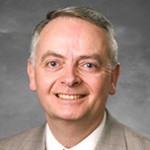 Thomas W. Sederberg showed in his thesis how to compute an exact implicit equation for Bézier curves and surfaces, and revealed that the implicit equation for a generic bicubic patch is degree 18, so two generic bicubic patches intersect in a curve of algebraic degree 324. He next invented piecewise algebraic surfaces, a technique for creating low-degree implicit surfaces suitable for free-form design. Piecewise algebraic surfaces are defined using trivariate Bézier solids, a tool he also used in Free-Form Deformation. The Bézier representation was also central to his invention of the method of Bézier-clipping, a series of algorithms for robustly computing intersections. His “moving surfaces” can elegantly implicitize a surface with base points. Applying this method to curves led to his discovery of the so-called mu-basis for parametric curves. His non-uniform Catmull-Clark surfaces provided a surface representation that is a superset of both Catmull-Clark surfaces and non-uniform bicubic B-spline surfaces. And his 2003 invention of T-Splines allows for local refinement of a spline surface of arbitrary topology. He co-founded a company to commercialize T-splines, which was acquired by Autodesk in December 2011. Because T-splines provide local refinement and watertight models, they have proven to be ideal for isogeometric analysis, which avoids the need for meshing.
Thomas W. Sederberg showed in his thesis how to compute an exact implicit equation for Bézier curves and surfaces, and revealed that the implicit equation for a generic bicubic patch is degree 18, so two generic bicubic patches intersect in a curve of algebraic degree 324. He next invented piecewise algebraic surfaces, a technique for creating low-degree implicit surfaces suitable for free-form design. Piecewise algebraic surfaces are defined using trivariate Bézier solids, a tool he also used in Free-Form Deformation. The Bézier representation was also central to his invention of the method of Bézier-clipping, a series of algorithms for robustly computing intersections. His “moving surfaces” can elegantly implicitize a surface with base points. Applying this method to curves led to his discovery of the so-called mu-basis for parametric curves. His non-uniform Catmull-Clark surfaces provided a surface representation that is a superset of both Catmull-Clark surfaces and non-uniform bicubic B-spline surfaces. And his 2003 invention of T-Splines allows for local refinement of a spline surface of arbitrary topology. He co-founded a company to commercialize T-splines, which was acquired by Autodesk in December 2011. Because T-splines provide local refinement and watertight models, they have proven to be ideal for isogeometric analysis, which avoids the need for meshing.
12 Vadim Shapiro, 2015 Bézier Award Recipient
 Vadim Shapiro has produced relevant contributions to the foundations of shape representations ans the unification of geometry and analysis. He has published groundbreaking work that has been characterized by mathematical rigor as well as engineering insight. He proposed a constructive (set) theory for construction, conversion, and maintenance of geometric representations based on space decompositions, with applications to conversion problems, to the systematic construction of implicit representations using R-functions and to the understanding of the limitations of modern multi-representation CAD systems. Another fundamental theme in Vadim Shapiro’s work has been related to the development of an algebraic framework for unifying geometric and physical representations. His work has been instrumental for formulating the notions of parametric families and identifying limitations of persistent naming problem, for developing new combinatorial representations and languages based on physical laws to support the computational design process, and for the simultaneous representation of topology, geometry and physics. Vadim Shapiro also extended implicit modeling to physical design and analysis problems, including modeling of heterogeneous structures Meshfree, query-based, simulation and optimization.
Vadim Shapiro has produced relevant contributions to the foundations of shape representations ans the unification of geometry and analysis. He has published groundbreaking work that has been characterized by mathematical rigor as well as engineering insight. He proposed a constructive (set) theory for construction, conversion, and maintenance of geometric representations based on space decompositions, with applications to conversion problems, to the systematic construction of implicit representations using R-functions and to the understanding of the limitations of modern multi-representation CAD systems. Another fundamental theme in Vadim Shapiro’s work has been related to the development of an algebraic framework for unifying geometric and physical representations. His work has been instrumental for formulating the notions of parametric families and identifying limitations of persistent naming problem, for developing new combinatorial representations and languages based on physical laws to support the computational design process, and for the simultaneous representation of topology, geometry and physics. Vadim Shapiro also extended implicit modeling to physical design and analysis problems, including modeling of heterogeneous structures Meshfree, query-based, simulation and optimization.
13 Herbert Voelcker, 2007 Bézier Award Recipient
Herbert Voelcker established the Production Automation Project (PAP) at the University of Rochester in 1972 and led it, with Aristides Requicha as senior scientist, to mid-1985. The PAP was the premier academic group working in what became known as solid modeling. They established most of the theoretical foundations for the field, using point-set and algebraic topology, and devised the first formally and computationally correct algorithms for ‘doing’ Boolean combinations of objects with overlapping boundaries. These algorithms were embodied in the PADL-1 and PADl-2 CSG-based modeling systems, whose source code was made publicly available in 1978 and 1982 and commissioned at hundreds of companies and universities. Voelcker and Requicha set forth the basic concepts of solid modeling as we know them today through regular university courses at Rochester, Cornell, and USC, and through tutorials taught at many conferences and several series of reports and papers. They also trained a cadre of graduate students, some of whom have become leaders in the solid modeling field. The PAP was disbanded in 1985/86 because, amongst other reasons, it was going stale. Requicha moved into computer science at USC, and Voelcker joined Cornell as the Lake Professor of Mechanical Engineering after spending a year helping to reorganize the NSF’s Engineering Directorate. He worked subsequently with Gershon Kedem on the Raycasting Engine, an elegant, highly parallel accelerator for solid modeling that was swept aside by the Wintel wave that washed through industry in the 1990’s. Voelcker is ending a 60-year career teaching mechanical design at Cornell and pondering assembly principles.

